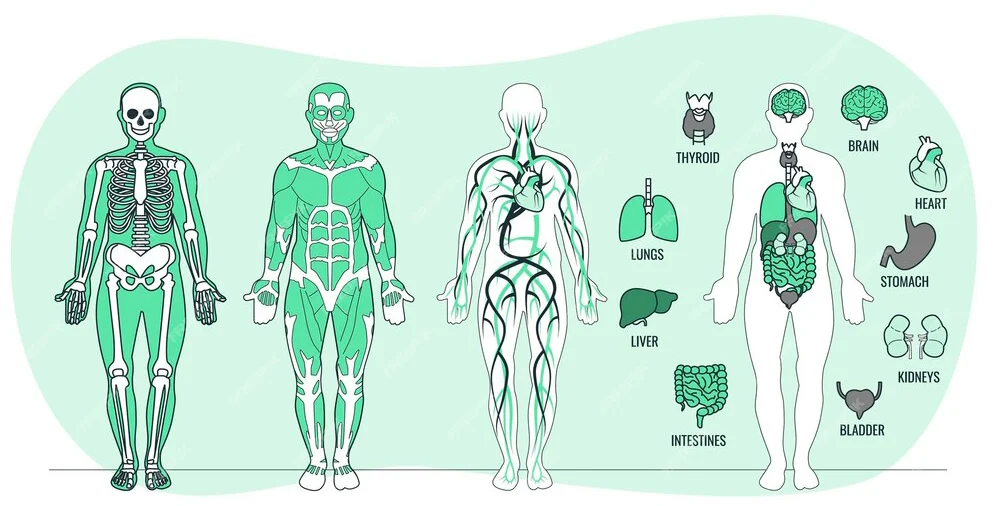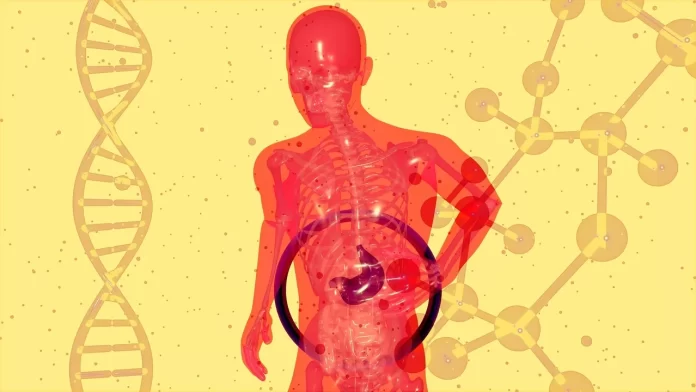Despite the progress made in the fields of health and science, there is still a great deal we do not comprehend about the inner workings of our bodies. Understanding the complex ecosystems within us, which essentially make up who we are, remains challenging. As a self-aware species, we are still in the process of developing our understanding of our own identity.
This is precisely why writers like Bill Bryson are invaluable. In his latest book, titled The Body: A Handbook for Occupants, Bryson expands upon his previous work, A Brief History of Virtually Everything, which was published in 2004. Bryson’s nonfiction writing is just as captivating as his travel diaries, albeit perhaps not quite as witty. Nonetheless, he manages to incorporate numerous amusing remarks into this current endeavour.
These are some fascinating pieces of information about ourselves, and more broadly, our species, that you may not have been aware of. Had this book been available to me during my high school years, I might have retained more knowledge than I did from those dull biology textbooks. This should serve as a reminder to educators.
The resistance
The resistance against antibiotics is growing, and there are several reasons why our gut environment, despite hosting many beneficial bacteria, is becoming less diverse. We owe a debt of gratitude to Alexander Fleming, the Scottish biologist who discovered penicillin in 1928, as it immediately saved countless lives. However, even back in 1945, Fleming warned about the dangers of microorganisms developing resistance to antibiotics, which were a relatively new form of medication at the time.
Bill Bryson highlights an alarming trend in the pharmaceutical industry. While in the United States, an average of three new antibiotics were introduced each year from the 1950s to the 1990s, that rate has significantly decreased. Currently, only one new antibiotic is launched every other year. The focus of pharmaceutical corporations has shifted towards developing treatments that people will need to take for extended periods, such as statins and SSRIs, rather than investing in low-profit drugs that may become ineffective within a few years.
The human brain
The human brain is a highly energy-demanding organ. Despite accounting for only 2% of our body weight, it consumes approximately 20% of our energy requirements. Whether we are engaged in passive activities like watching TV or engaging in mentally demanding tasks like solving complex arithmetic problems, our brain burns around 400 calories every day. Surprisingly, the amount of thinking or mental effort exerted does not directly correlate with an increased calorie burn. In fact, the opposite is true.
Richard Haier, a professor at the University of California, Irvine, conducted research using positron emission tomography scanners. His findings revealed an intriguing pattern: the brains that worked the hardest were often the least productive. On the other hand, the most efficient and functional brains were those that could rapidly process and save a task before entering a standby mode, conserving energy. This suggests that excessive mental exertion may not necessarily lead to optimal productivity, and the ability to efficiently allocate and conserve cognitive resources plays a crucial role in brain functioning.
Brain Efficiency and Energy Consumption
The human brain is an energy-hungry organ, despite its small size relative to our body. Weighing only 2% of our total body weight, it accounts for a significant 20% of our energy requirements. Whether you’re engaged in passive activities like watching TV or tackling mentally challenging tasks like performing complex arithmetic, your brain consumes approximately 400 calories on a daily basis. Surprisingly, expending more mental effort does not lead to a higher calorie burn. In fact, the opposite holds true.
Research conducted by Professor Richard Haier at the University of California, Irvine, utilizing positron emission tomography scanners, revealed an interesting finding. He discovered that the brains that worked the hardest were often the least productive. On the other hand, the most efficient brains were those capable of quickly storing a task and entering a sort of standby mode. This suggests that optimal brain function is not solely determined by intense mental exertion, but rather by the ability to efficiently allocate and conserve cognitive resources.
Brain Efficiency and Expectations
Richard Haier, a professor at the University of California, Irvine, conducted a study utilizing positron emission tomography scanners. His research revealed an intriguing finding: the brains that exerted the most effort were often the least productive. In contrast, the most efficient brains were those capable of quickly storing a task and transitioning into a standby mode. This highlights the importance of cognitive resource allocation for optimal brain functioning.
Furthermore, it’s worth noting that there is a limited distinction between physical and mental distress. Both types of anguish can be alleviated using various techniques. These include the use of pleasant fragrances, calming visual stimuli, enjoyable music, satisfying meals, and engaging in sexual activities. Additionally, the power of expectation plays a crucial role. As Bill Bryson writes, “In many ways, the suffering we experience is influenced by the level of suffering we anticipate.”
Early Puberty and Health Concerns
In the past, children typically experienced puberty around the ages of 16 or 17. However, due to improved nutrition and overall health, the onset of puberty has significantly decreased over the last century. While this may seem like a positive change, it has brought forth a new challenge. Young girls are now entering menstruation as early as seven or eight years old, and this has raised concerns regarding their long-term health. There is a correlation between high estrogen levels, which can occur during early puberty, and an increased risk of cancer later in life. This highlights the complex nature of addressing societal issues. As we address one problem, such as improving nutrition and combating starvation, new challenges emerge in unforeseen ways.
Allergies and C-Section Delivery
Allergies, despite lacking a clear cause, affect a significant portion of the global population, ranging from 10% to 40%. However, an important correlation has been identified: children born through C-sections have a significantly higher likelihood of developing allergies. In fact, they are eight times more prone to allergies compared to those born through natural delivery. Furthermore, C-section births are also associated with an increased risk of conditions such as diabetes, asthma, celiac disease, and obesity. It is worth noting that currently, approximately 60% of C-sections are performed for non-medical reasons, driven by convenience rather than necessity.
This trend raises concerns, as there is a reason why new-borns are born naturally. By opting for C-sections without a medical requirement, we may inadvertently be causing more harm than good to our children’s health. It is crucial to carefully consider the potential consequences and prioritize the well-being of both mother and child in the decision-making process surrounding childbirth.
Impact of Food Consumption on Health
In the past, a significant portion of an average American’s monthly salary was spent on food, while today it accounts for a smaller percentage, around 6%. However, despite this decrease in spending, our consumption has actually increased. Our natural inclination for hoarding and the prevalence of processed meals, many of which contain added sugars, have taken a toll on healthcare systems. Bill Bryson highlights the unique situation we find ourselves in: there are now more people on Earth suffering from obesity than from hunger, a historically exceptional circumstance.
Health Beyond Weight
It is important to recognize that weight alone does not determine overall health. While it is well-known that excess fat contributes to various health problems, solely focusing on “clean food” and a holistic lifestyle does not guarantee immunity from all diseases related to biology.
Surprisingly, around 40% of individuals with conditions such as diabetes, chronic hypertension, or cardiovascular disease were initially deemed physically fit before developing these illnesses. On the other hand, approximately 20% of significantly overweight individuals live long lives without addressing their weight.

Unravelling Common Misconceptions
1: MSG – A Misunderstood Flavor Enhancer
In 1968, a doctor’s letter wrongly linked Chinese restaurants and unpleasant experiences, suspecting MSG as the cause. Despite lacking proper research, this misconception has persisted for decades. Contrary to popular belief, MSG is not harmful but rather an essential component responsible for the delightful taste known as umami.
2: Testosterone Pills – Risks Outweigh Benefits
Marketing techniques promoting testosterone pills to combat age-related decline often overlook the dangers. Men who opt for these supplements actually increase their chances of experiencing heart attacks or strokes.
3: 10,000 Steps a Day – Debunking the Walking Myth
The notion of achieving 10,000 steps per day is based on a questionable study conducted in Japan during the 1960s. Contrarily, studies of hunting and gathering societies, known for their active lifestyles, reveal a significantly higher average distance of 19 miles per day.

